Introduction to Poker Hand Strength Chart
Whether you’re new to the game of poker or looking to enhance your strategy, understanding the poker hand strength chart is crucial. This guide will help you understand what a poker hand strength chart is and why it’s important.
What is a Poker Hand Strength Chart?
A poker hand strength chart is a visual guide that represents the strength of various poker hands in relation to each other. It helps players determine the potential value of their hand in comparison to other possible hands. This chart typically ranks hands from highest to lowest based on their statistical probability of winning a hand.
For instance, a royal flush, which is the strongest hand in poker, sits at the top of the chart. Other hands follow in descending order, down to a high card, which is the weakest hand.
Here’s an example of what a basic poker hand strength chart might look like:
| Hand | Rank |
|---|---|
| Royal Flush | 1 |
| Straight Flush | 2 |
| Four of a Kind | 3 |
| Full House | 4 |
| Flush | 5 |
| Straight | 6 |
| Three of a Kind | 7 |
| Two Pair | 8 |
| One Pair | 9 |
| High Card | 10 |
The Importance of a Poker Hand Strength Chart
The poker hand strength chart is an essential tool for any poker player. It provides a baseline understanding of the relative power of poker hands, offering insights into how likely a hand is to beat other hands.
Using the chart as a reference, players can make informed decisions about whether to bet, call, raise, or fold in various game scenarios. This is particularly useful during the preflop stage of the game, where understanding the strength of initial hands can guide a player’s strategy.
Moreover, familiarizing oneself with the poker hand strength chart can help players better predict their opponents’ hands and anticipate potential outcomes. This knowledge, combined with an understanding of poker preflop strategy, can significantly increase a player’s chances of success at the table.
In the subsequent sections of this guide, we will delve into how to read and effectively use the poker hand strength chart to enhance your poker strategy.
Understanding the Poker Hand Strength Chart
To master the game of poker, one must understand the poker hand strength chart. This chart serves as a fundamental tool in deciding which hands to play and which to fold. The key to utilizing this chart effectively lies in understanding how to read it and knowing the rankings of poker hands.
How to Read the Chart
The poker hand strength chart is arranged according to the power of each hand. The chart typically represents hands with the highest strength at the top and gradually decreases as you move down the chart.
The chart is usually read from left to right, starting with the strongest hand, which is a Royal Flush, and ending with the weakest hand, which is a high-card hand. Each hand is classified according to the combination of cards it contains.
To use the chart effectively, one should match their hand with the hands represented on the chart. This will reveal the strength of their hand and guide them on whether to play or fold. For further understanding on how to use this tool, refer to our article on poker starting hands chart.
The Rankings of Poker Hands
Understanding the rankings of poker hands is crucial when using the poker hand strength chart. Here is the traditional ranking of poker hands, starting from the strongest to the weakest:
#1 – Royal Flush
The highest possible hand in poker, consisting of the Ace, King, Queen, Jack, and Ten of the same suit.
 A♠️ |  K♠️ |  Q♠️ |   J♠️ | 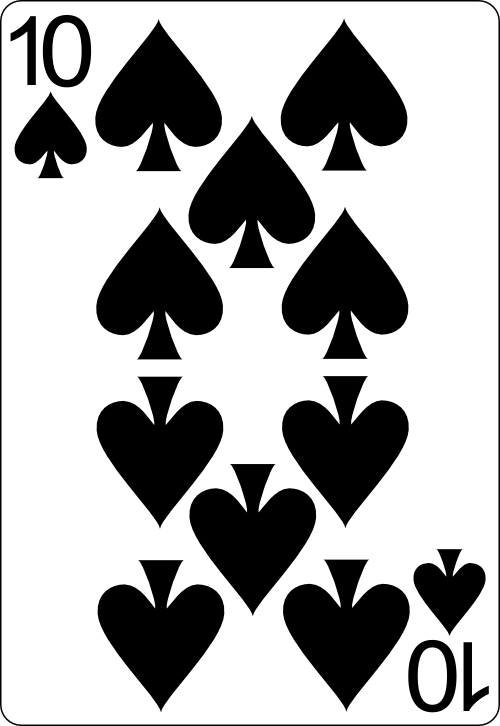   10♠️ |
#2 – Straight Flush
Five consecutive cards of the same suit.
   5♠️ |   6♠️ | 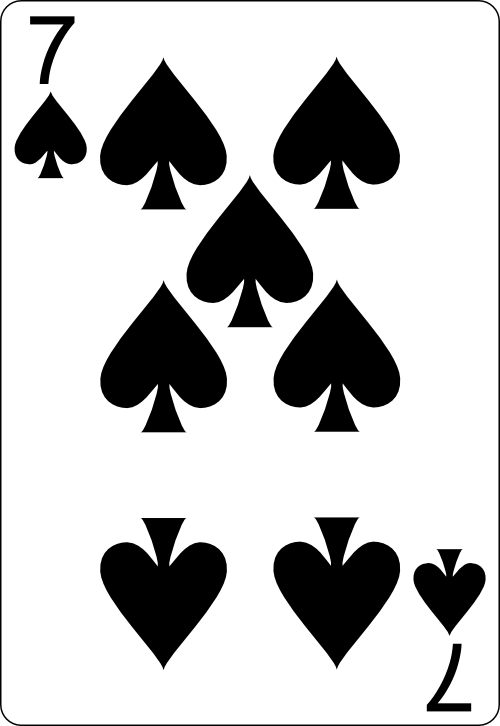   7♠️ | 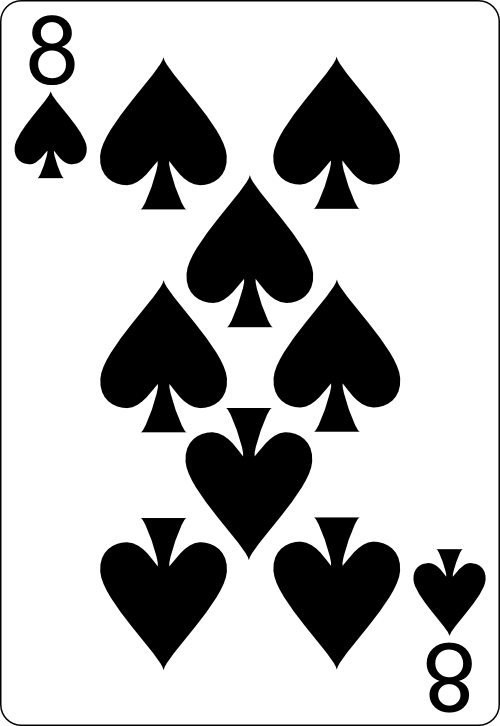  8♠️ | 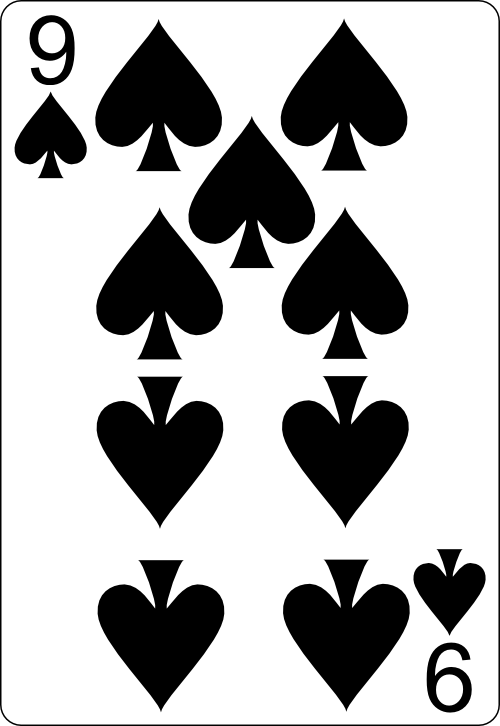    9♠️ |
#3 – Four of a Kind
Four cards of the same rank.
  4♠️ |      4♣ |   4♥️ |     4♦️ |     9♠️ |
#4 – Full House
Three cards of one rank and two cards of another rank.
  A♣️ |    A♦️ |    A♥️ |      4♣️ |     4♦️ |
#5 – Flush
Five cards of the same suit, not in sequence.
  5♦️ | 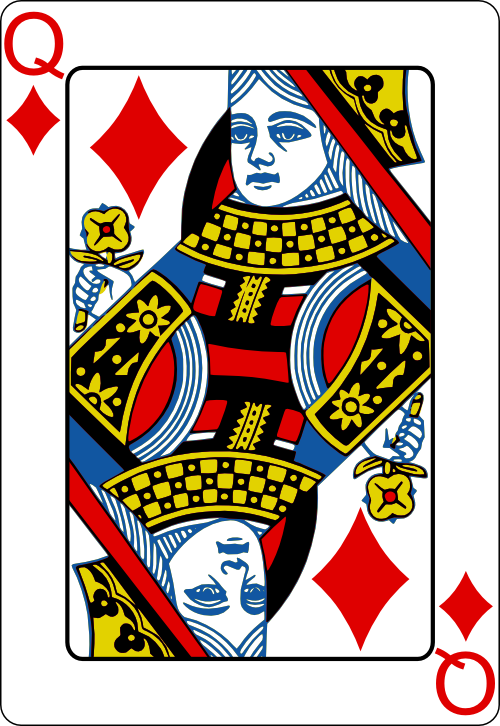  Q♦️ |   3♦️ |    10♦️ |    A♦️ |
#6 – Straight
Five consecutive cards of any suit.
  10♣️ |    J♦️ |    Q♠️ | 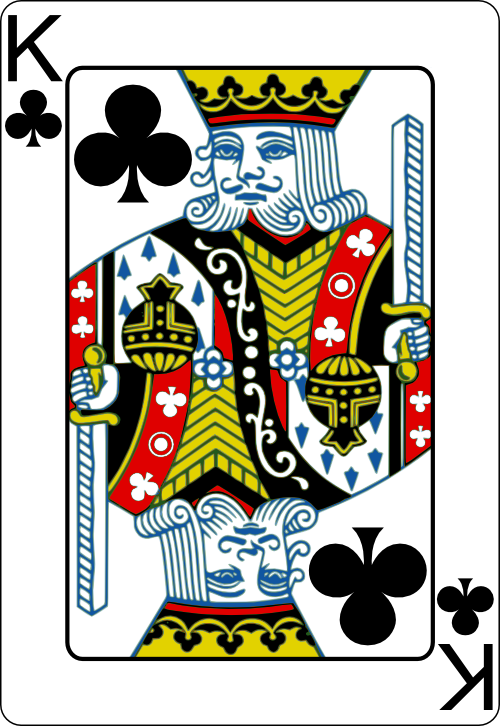  K♣️ |    A♥️ |
#7 – Three of a Kind
Three cards of the same rank.
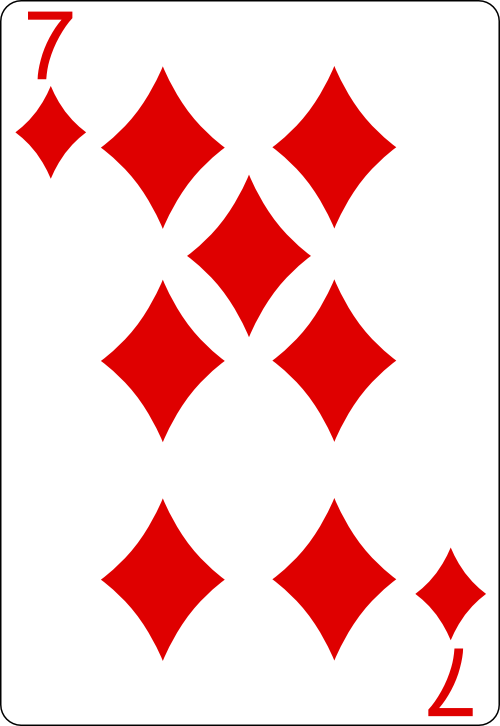  7♦️ | 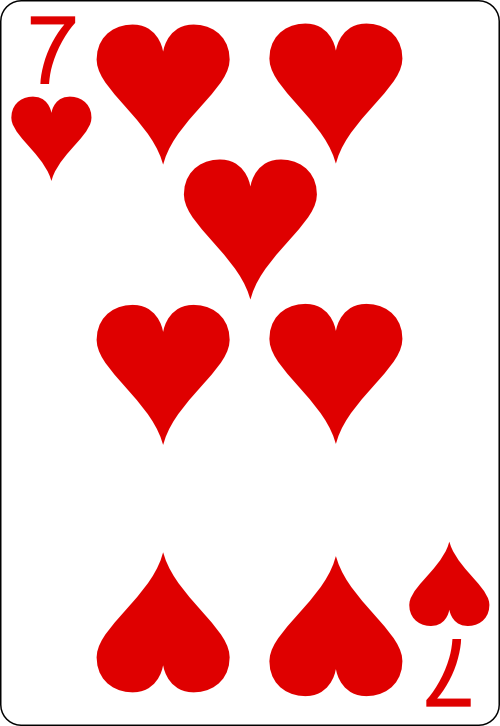  7♥️ |    7♠️ |   K♥️ | 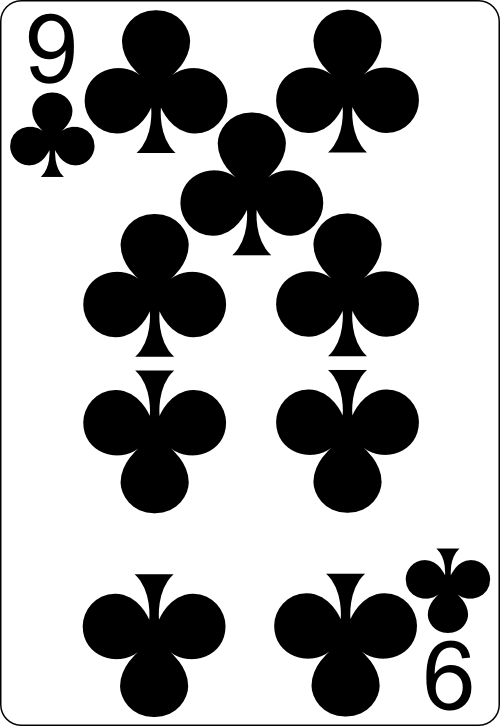  9♣️ |
#8 – Two Pair
Two different pairs of cards.
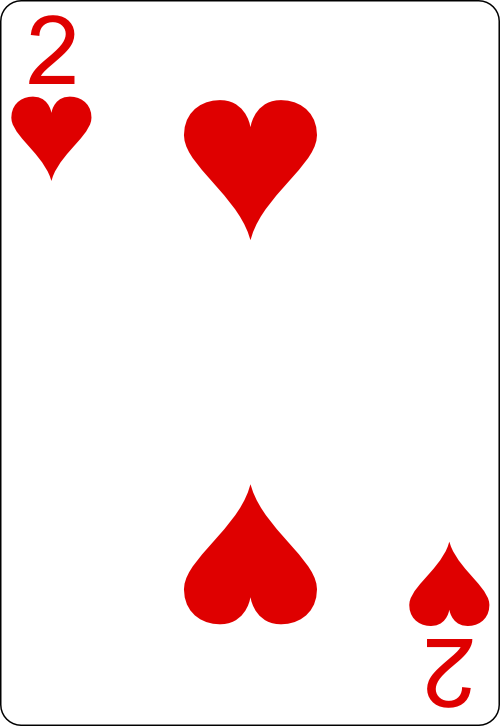    2♥️ |   2♠️ |   J♣️ |    J♦️ |     4♦️ |
#9 – Pair
Two cards of the same rank.
   10♠️ |    10♦️ |      4♣️ |    5♠️ |     2♥️ |
#10 – High Card
When you don’t have any of the above hands, your highest card is your hand.
    9♠️ | 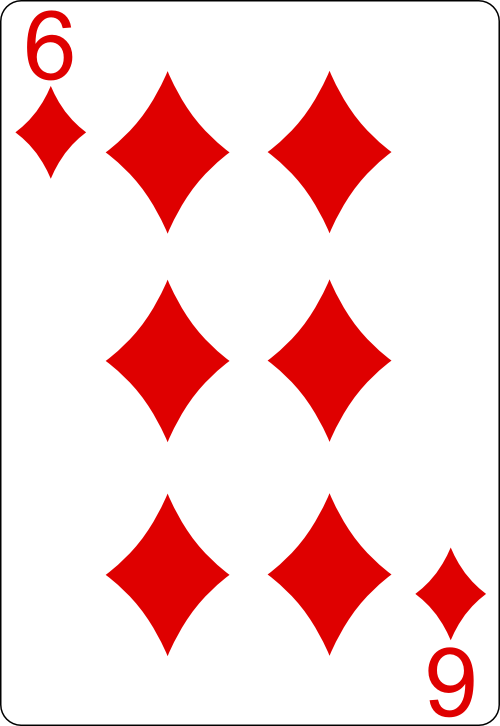  6♦️ |      4♣️ |   3♠️ |     2♥️ |
For a detailed explanation of poker hand rankings, refer to our article on poker hand rankings.
| Hand Rank | Hand Name | Example |
|---|---|---|
| 1 | Royal Flush | A♥ K♥ Q♥ J♥ 10♥ |
| 2 | Straight Flush | 9♣ 8♣ 7♣ 6♣ 5♣ |
| 3 | Four of a Kind | J♦ J♥ J♣ J♠ 7♠ |
| 4 | Full House | 10♦ 10♣ 10♠ 6♥ 6♠ |
| 5 | Flush | K♣ 10♣ 7♣ 6♣ 4♣ |
| 6 | Straight | Q♠ J♦ 10♥ 9♣ 8♥ |
| 7 | Three of a Kind | 8♠ 8♦ 8♥ K♠ 4♣ |
| 8 | Two Pair | A♠ A♣ J♦ J♣ 7♠ |
| 9 | Pair | 10♠ 10♦ K♠ Q♥ 4♣ |
| 10 | High Card | A♣ K♠ Q♥ J♦ 3♣ |
Understanding these rankings and how they correlate to the strength of the hand can significantly increase your success in poker. For more information on the best preflop hands in poker, check out our article here.
Using the Poker Hand Strength Chart in Your Strategy
Applying the poker hand strength chart effectively in your gameplay can drastically improve your decision-making process and overall results. This section will explore how to utilize the chart in both pre-flop and post-flop scenarios.
Pre-flop Strategy
The pre-flop phase is when you make your first critical decision in a poker hand. Here, the poker hand strength chart serves as a valuable tool to help you decide whether to fold, call, or raise. It categorizes starting hands into tiers, giving you a clear idea of which hands are strong or weak.
For instance, hands in the top tier such as Aces, Kings, and Queens are usually worth a raise or a call, even in early position. On the other hand, hands in the lower tiers might warrant caution and are often best folded unless you are in a late position or the action has been folded to you. For a more detailed guide, refer to our poker starting hands chart.
| Hand Rank | Pre-Flop Action |
|---|---|
| Top Tier (e.g., AA, KK, QQ) | Raise/Call |
| Middle Tier (e.g., 77, 88, 99) | Depends on Position/Action |
| Lower Tier (e.g., 22, 33, 44) | Usually Fold |
It’s important to remember that while the chart is a useful guide, it should not be followed blindly. You also need to consider other factors such as your position, the actions of other players, and your read on opponents. For a comprehensive pre-flop strategy, visit our article on poker preflop strategy.
Post-flop Strategy
After the flop, the poker hand strength chart continues to be a useful reference. It can help you evaluate how your hand has improved or deteriorated relative to the community cards.
For instance, if you started with a strong pre-flop hand but the flop didn’t improve your hand, the chart can help you reassess the strength of your hand. Conversely, if you started with a marginal hand but the flop greatly improved your hand, the chart will reflect this change.
| Hand Rank | Post-Flop Action |
|---|---|
| Improved Hand (e.g., hitting a set or straight) | Bet/Raise |
| Unchanged Strong Hand (e.g., overpair to the board) | Bet/Call |
| Unimproved Hand (e.g., low pair missing the flop) | Usually Fold |
Again, while the chart provides a solid starting point, it’s crucial to incorporate other strategic considerations. These include the size of the pot, the texture of the community cards, and the tendencies of your opponents. For detailed insight on this topic, refer to our article on preflop hand odds.
By integrating the poker hand strength chart into your strategy, you can make more informed decisions and increase your chances of success at the poker table. Just remember that the chart is a tool, not a rulebook—other strategic factors should always inform your final decisions.
Common Mistakes to Avoid With Hand Charts
While a poker hand strength chart can be a powerful tool in developing your poker strategy, like any tool, it’s essential to use it correctly. Let’s consider some common mistakes that poker players can make when using hand charts.
Over-reliance on the Chart
One of the most common mistakes players make is over-reliance on the chart. While the chart can provide a solid foundation for understanding the strength of different hands, it is not a definitive guide that applies to every situation in a poker game.
A poker hand strength chart is a static tool, meaning it doesn’t take into account the dynamic aspects of poker such as the number of players, their playing styles, your position at the table, or the size of the pot. Over-reliance on the chart can lead to predictability, a trait that experienced opponents can exploit.
Instead, use the chart as a starting point for your decisions, but also incorporate other elements of poker strategy, such as bluffing, pot odds, and player tendencies. Check out our article on poker preflop strategy for more insights.
Ignoring Other Strategic Factors
Another common mistake is ignoring other strategic factors. While the poker hand strength chart can guide you on which hands to play, it doesn’t tell you how to play them. For example, the chart doesn’t take into account your position at the table, which can significantly influence your decision-making.
Moreover, the chart doesn’t consider the actions of other players. If an opponent has been playing aggressively, it might be a signal that they have a strong hand, which could influence your decision regardless of what the chart suggests.
Also, remember that the chart doesn’t account for the cards on the table in a post-flop scenario. Therefore, you need to adapt your strategy based on the cards displayed in the flop, turn, and river.
To truly excel at poker, it’s crucial to learn how to balance the guidance from the poker hand strength chart with other strategic considerations. Understanding preflop hand odds and identifying the best preflop hands in poker will also significantly enhance your poker game.
Advanced Considerations for Using the Poker Hand Strength Chart
While understanding the basics of the poker hand strength chart is fundamental to improving your poker game, mastering the advanced considerations can provide you with a significant edge over your opponents.
Positional Considerations
In poker, your position at the table greatly impacts the optimal strategy. Generally, the later your position, the more information you have about your opponents’ hands, which can guide your decision-making process.
When using a poker hand strength chart, you should adjust your hand selection based on your position. For instance, in early position, it’s advisable to play a tighter range of hands. As you move to later positions, you can widen your range, including more speculative hands in your pre-flop strategy.
For a more detailed analysis of how position influences your hand selection, refer to our guide on poker preflop strategy.
Adjusting to Opponents and Table Dynamics
Another crucial factor to consider when using a poker hand strength chart is the playing style and strategy of your opponents. It’s essential to adapt your strategy based on the table dynamics and the tendencies of your opponents.
For instance, if you’re playing against tight opponents, you might be able to profitably play more hands, given that they are likely to fold to aggression. Conversely, against looser opponents, it might be more advantageous to play a tighter range of high-quality hands.
Keep in mind that a poker hand strength chart is not a rigid roadmap, but a strategic tool that should be adjusted based on the specific game conditions.
Balancing Your Range With the Chart
The poker hand strength chart can also be used to ensure you have a balanced range of hands. This means having a mix of strong, medium, and weak hands in your range to keep your opponents guessing about your possible holdings.
Balancing your range makes you unpredictable and harder to play against. It prevents opponents from making accurate assumptions about your hand based on your actions. If you only play the top hands from the chart, your opponents can easily fold when you bet, knowing that you likely have a strong hand.
For a deeper understanding of the concept of hand ranges and how to balance them, explore our article on the best preflop hands in poker.
Remember, the poker hand strength chart is a powerful tool, but it’s not a substitute for understanding the intricacies of the game. Always consider the context, including your position, the table dynamics, and the need for a balanced range, when deciding which hands to play.

